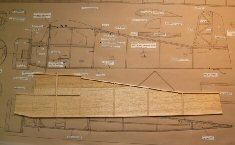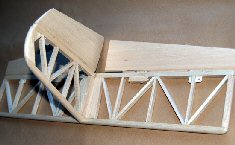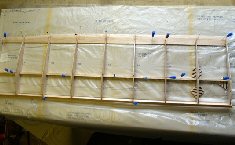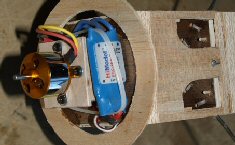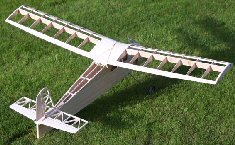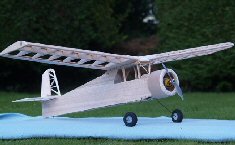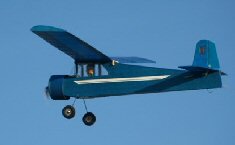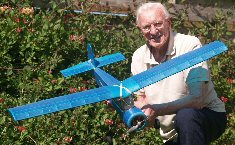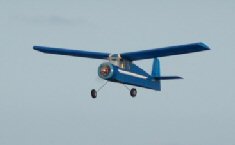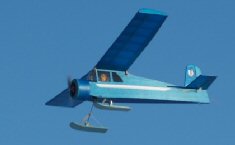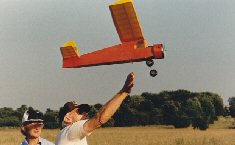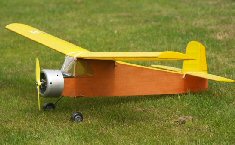|
|||
|
|
|
||
| View Shopping Cart |
| Home |
| Guides Available |
| About the Author |
| FAQs |
| Testimonials |
| Articles |
| Contact Andrew |
| Terms & Conditions |
| Mailing List |
| Links |
 |
 |
More high quality information absolutely
free with every
Gibbs Guides newsletter. Sign
up now!
Mike White's Quo Vadis
Article by Andrew Gibbs
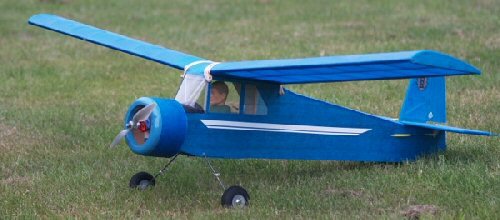
Following on from reading Successful Electrics magazine, Mike White from the Isle of Man wrote to me with details of his charming electric powered vintage style Quo Vadis. Mike and I had an interesting exchange of letters, the result of which was this article.
The history of this charming model is a little more than a simple tale of design and build. Mike is quick to point out that he did not, at least in the first instance, design the model though he must undoubtedly take credit for its continued existence. To illustrate why this is so, I quote from one of Mike’s letters:
When I read that you fly at Thorney Island it brings a lump to my throat for a lost youth! I was there in the RAF in 1950 and 51 and had a great time. It was then No.3 Air Navigation School (I think it was No. 3). And the summers were excellent, not as they are nowadays!
It was here that I had my first real success at designing with a model called Quo Vadis, 48 inches in span, and powered by a Frog 100 (1cc) diesel. It was designed in the first instance by one of our engine fitter Corporals, Rinty Monaghan but he never drew out the plans so I just copied the airframe.
| The fuselage of Quo Vadis at an early stage of the build (click small images to enlarge). | The tail structure comprises built up surfaces with sheet control surfaces (click small images to enlarge). |
Both models, free flight of course, were very successful. Later, about 1985, or so, I did the drawings and Aeromodeller published the plans as plan number AM 1496. Later still I did an R/C version which Traplet Publications used in, I think, RC Model World in Dec 2012 as plan number MW3623….electric power of course. I also did a 66 inch version for the BMFA newspaper way back and now have a wish for an 85 inch span lightweight version……
Mike’s electric Quo Vadis is of classic all balsa construction with a little lite ply in the nose area. In contrast to the more usual construction technique of longerons and uprights, the fuselage is made from 1/16 (1.5 mm) balsa sheet sides. These are edged with 1/8 sq. (3mm) balsa, while the nose cowl is 1/64 (0.4 mm) ply doubled over two formers.
The model's electric power system consists of a 3-cell 1,500 mAh LiPo battery, a small ESC and a 1,200 Kv motor turning a 7x5 prop. Mike does not give a figure for the current and power consumption, but referring to the relevant table in the guide Power System Solutions I would expect the combination to draw close to 10 Amps/100 Watts and for the prop to turn at around 11,200 rpm. The relevant table is here:
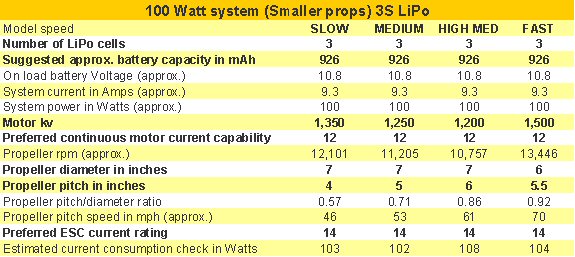
Mike's choice of battery is somewhat larger than the nominal size indicated in the table, which should provide long, relaxing flights.
Mike says he covered the model in Litespan and may have added a light coat of clear dope – but he can’t say for certain as he says ‘there have been many models under the bridge since this one was finished……..’
| The wings of Quo Vadis are built over the plan in classic traditional building style. The plan is protected with clear film | The nose houses both the motor , which is mounted on a simple box attached to the firewall and its associated ESC. |
Free flight models are less able to be enjoyed these days, as there are fewer and fewer large open areas available which are suitable for this type of model. Also of course, noisy engines are also less easy to accommodate in today’s more crowded world. Fortunately, the addition of radio control and the use of electric power allow many wonderful old free flight designs to have a new lease of life, and prevents the need to chase models to their landing site after a ‘fly away’. Mike tells the story of one such incident:
The water surrounding Thorney Island was a hazard to `flyaways` as we had one Quo in particular fly away out towards Hayling Island. At that time there was a strip of water at the Station Police office as one entered the station, called The Deeps, which ran from there out towards the sea. There was a drainage pipe of about 5-6 feet diameter (if I remember correctly) in the sea wall. Some days after the flyaway I was down at the Deeps experimenting with a small Jetex hydroplane and…..I saw the Quo sitting in the middle of the pond, it having been swept (?) back through the pipe!! The water was a bit smelly back then. I know because I had to swim out and get that errant Quo!
| The finished model in its uncovered state. | This type of model has a low wing loading, and consequently tends to have long life, giving a high ratio of fun per hour of building. |
| Quo vadis? is a Latin phrase meaning "Where are you going?" This seems to be a rather appropriate name for a design that started life as a free flight model!! | Mike White is pictured here with his model. The model's pretty lines are evident even from all angles |
Mike certainly enjoyed his time on Thorney Island with the RAF. A combination of an involvement with full size aeroplanes and plenty of aeromodelling with like minded friends sounds very appealing to me. Mike says:
Yes, I did enjoy Thorney even though we had a lot of crashes, 3 in one night on the airfield, luckily no injuries that I recall.
We operated Wellingtons in those days and one night lost 3 in a fire out on the line. One of the armourers dropped a marker bomb which went off causing the fire. In those days the Navigators did the bombing which we practiced out at Chesil Beach. I was in the Instrument section and did the Mark 14 bombsight leveling and on many occasions had the experience of going on details to the beach and doing a few bomb drops.
Another memory is of 39 M.U (Maintenance Unit) coming down to scrap an over-the-hill Wimpy and cutting up the wrong one!! It was a very happy station in those days and has some very nostalgic memories for me.
| Quo Vadis approaching the camera. The model's all blue colour scheme looks lovely against the sky. | Mike built a set of skis for winter use. This adds a new dimension of interest. Its good to see a model with a pilot in the cockpit! |
As well as an electric version, Mike still has an old diesel powered example of this design, which is shown below. This of course has a slightly different type of appeal, especially on account of the aroma of the fuel.
However, of course for the foreseeable future, it is the electric version that will remain the most popular and I'm sure that this lovely design will continue to appeal to modellers for a long time to come.
Thanks for sharing your memories and your model, Mike!
| Mike White is seen here launching his free flight diesel powered Quo Vadis around 1985 at Croydon. | The diesel powered Quo Vadis at rest. The model still exists and is still flown on occasion. |
| Quo Vadis technical data | ||
| Span | 1,220 mm | 48 inches |
| Chord | 180 mm | 7 inches |
| Wing Area |
0.21 sq m | 2.3 sq ft (336 sq in) |
| Flying Weight | 570 g | 20 oz = 1lb 4oz |
| Wing Loading | 00g/dm | 9 oz/sq ft |
| Battery | 3S 1,500 mAh LiPo | |
| Motors | E-Max 2822 (1200 Kv) | |
| Prop | 7x5 APC approx 11,200 rpm | |
| Max Power | Approx 100 Watts | |
| Power Loading (max power) | 176 W/kg | Approx 80 W/lb |
| Endurance | More than 10 min | |
| Control functions | Elevator, rudder, throttle. | |
More high quality information
absolutely free with every
Gibbs Guides newsletter. Sign
up now!
